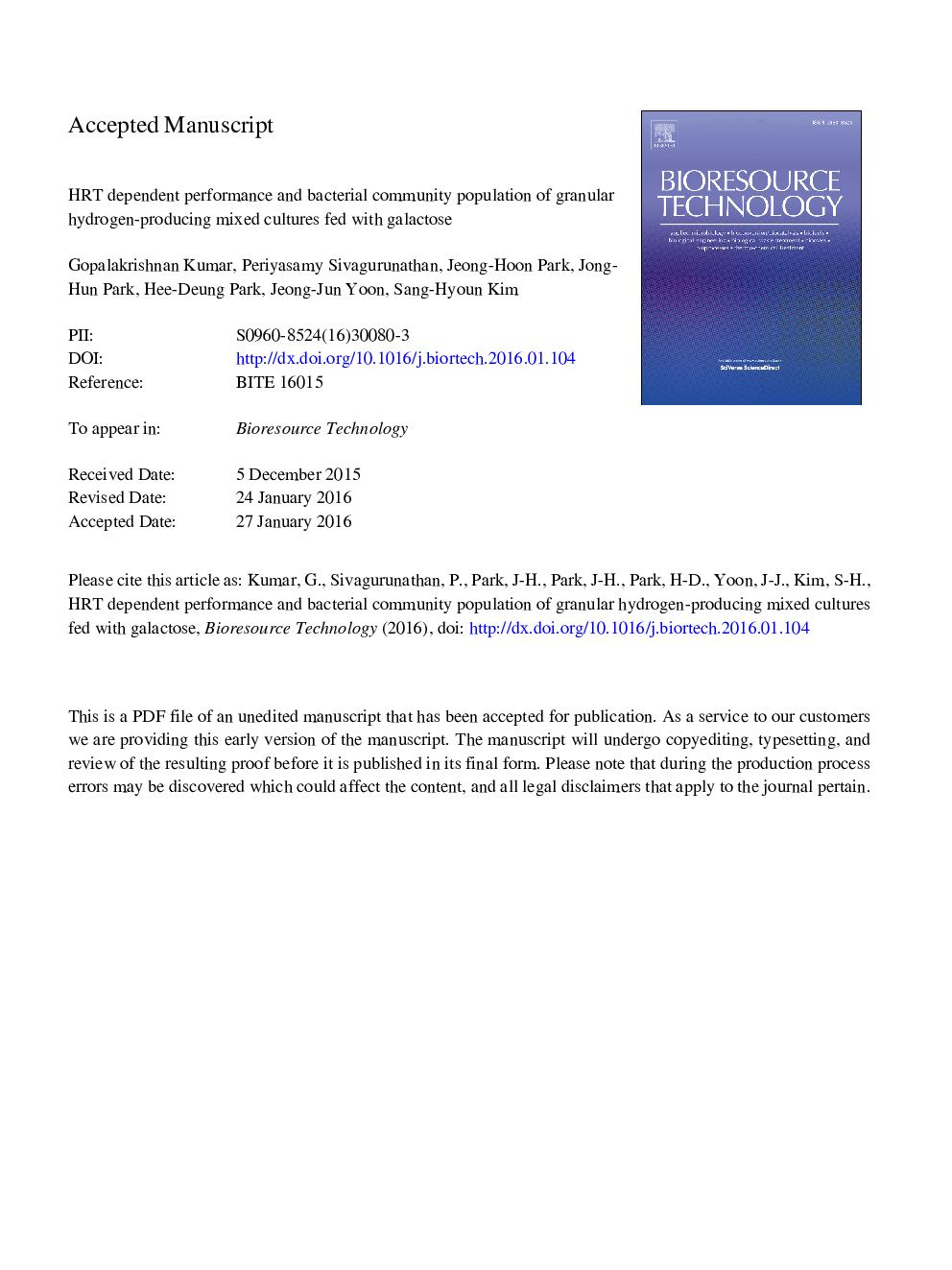| Article ID | Journal | Published Year | Pages | File Type |
|---|---|---|---|---|
| 7072217 | Bioresource Technology | 2016 | 31 Pages |
Abstract
The effects of hydraulic retention times (HRTs-6, 3 and 2 h) on H2 production, operational stability and bacterial population response in a continuously stirred tank reactor (CSTR) were evaluated using galactose. A peak hydrogen production rate (HPR) of 25.9 L H2/L-d was obtained at a 3 h HRT with an organic loading rate (OLR) of 120 g/L-d, while the maximum hydrogen yield (HY) of 2.21 mol H2/mol galactose was obtained at a 6 h HRT (60 g galactose/L-d). Butyrate was dominant and the lactate concentration increased as HRT decreased, which significantly affected the HY. Biomass concentration (VSS) decreased from 16 to 3 g/L at a 2 h HRT, leading to failure. A 3 h HRT supported the favorable growth of Clostridium species, as indicated by an increase in their populations from 25.4% to 27%, while significantly reducing Bacilli populations from 61.6% to 54.2%, indicating that this was the optimal condition.
Related Topics
Physical Sciences and Engineering
Chemical Engineering
Process Chemistry and Technology
Authors
Gopalakrishnan Kumar, Periyasamy Sivagurunathan, Jeong-Hoon Park, Jong-Hun Park, Hee-Deung Park, Jeong-Jun Yoon, Sang-Hyoun Kim,
